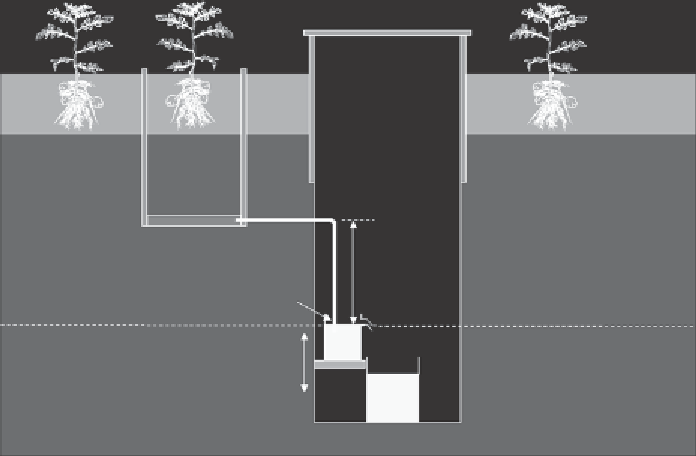Geoscience Reference
In-Depth Information
Porous plate
Applied
suction
Same level as groundwater level
Groundwater level
Height
variable
Figure 8.4
Possible setup of a nonweighable lysimeter.
same depth. The difference in soil water storage might be measured with TDR
sensors (
Section 4.11.3
) or a neutron probe in preinstalled access tubes. In weigh-
able lysimeters the change of soil water storage can be assessed directly from the
difference in weight. Though dificult and expensive to install, lysimeters have
been used widely to test different evapotranspiration formula (Aboukhaled et al.,
1982
).
Microlysimeters of 5-10 cm diameter and 5-10 cm high can be used to measure
evaporation from bare soil (Boast and Robertson,
1982
). The thin-walled cylinders
are pushed into the ield soil and carefully lifted from their place. Next the cylinder
bottom is closed water-tight and the mass of the cylinder including the moist soil
is determined. The cylinder is replaced in the ield with its top even with the sur-
rounding ield, leaving it exposed to environmental conditions representative for
the bare soil. After a period of time (typically 1-2 days) the cylinder is weighed
again. The weight loss equals the amount of evaporation. Microlysimeters of 5 cm
high cannot be used for periods longer than 2 days, because after this time the
closed bottom of the cylinder starts to restrict the soil evaporation in compari-
son with the surrounding ield. Recently, automatic microlysimeters (where the
weighing is done in the lysimeter itself) have been developed (Heusinkveld et al.,
2006
).
Question 8.6:
Give the water balance of a nonweighable lysimeter and explain how the
evapotranspiration is determined from that water balance.

Search WWH ::

Custom Search